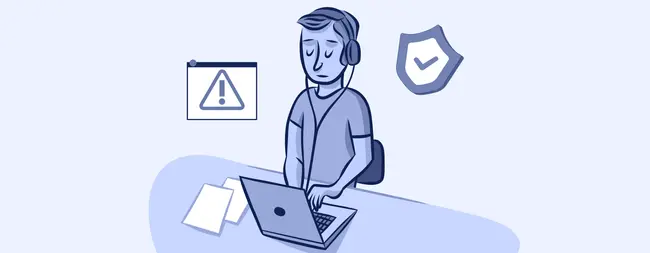The gig economy has revolutionized the way we work. It’s a world where freelancers and independent contractors can set their own hours, choose their projects, and enjoy the freedom and flexibility that traditional employment often lacks.
But this exciting landscape of opportunity also comes with scammers just looking to trick hard working freelancers. And if you’re a part of the gig economy, you need to know what risks you’re dealing with, and how to keep yourself safe.
Payment Fraud
While we all work with the goal of getting paid, in the gig economy, transactions usually occur across digital platforms, and with clients you may never meet in person. Because of the way this system is set up, payment fraud is unfortunately all too common.
Some of the most common payment fraud scenarios include:
-
The disappearing client: You complete a project and submit your invoice, and then the client just disappears, ignoring your emails and calls, leaving you with unpaid invoices. This is a classic scenario, especially when working with new or unvetted clients.
-
The stolen credit card: A client pays you with a stolen credit card. Initially, the payment might appear to go through, but later, the transaction is reversed, leaving you with a negative balance and potential fees from your payment processor.
-
The bouncing check: A client sends you a check that bounces due to insufficient funds. You’ve already completed the work and might have even incurred expenses, but now you’re left chasing a client who probably won’t be willing to pay what they owe you.
-
The upfront payment trap: A client offers a lucrative project but demands a significant upfront payment before any work begins. Once you’ve paid, the client might disappear, leaving you with a significant financial loss.
-
The fake escrow scam: A client proposes using an escrow service to hold funds securely until the project is complete. However, the escrow service turns out to be fake, and controlled by the scammer. You deposit your work, believing it’s safe, but the scammer disappears with both your work and the client’s “payment.”
Protecting Yourself from Payment Fraud
-
Use secure payment platforms: Opt for reputable payment platforms that offer buyer and seller protection, such as PayPal, Stripe, or escrow services (but be sure to verify their legitimacy).
-
Request upfront payments or milestone-based payments: For larger projects, negotiate upfront payments or break down the project into milestones with payments due upon completion of each stage.
-
Create clear contracts and payment terms: Always have a written contract that clearly outlines the scope of work, payment terms, and deadlines.
-
Document all communications and transactions: Keep records of all communications with clients, including emails, messages, and invoices.
-
Don’t trust suspicious requests: Trust your instincts. If a client’s request seems unusual, overly complex, or too good to be true, it’s best to stay away from the project.
-
Verify client identities: Take the time to verify the identity of new clients by checking their online presence, contacting references, or using verification services.


